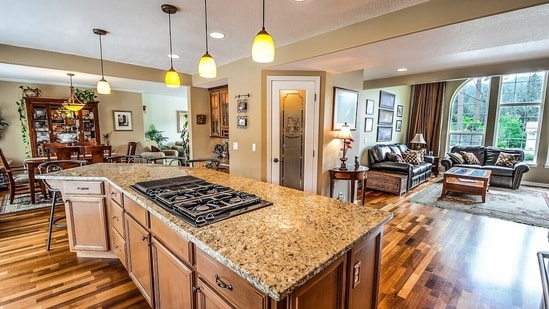Our Terms & Conditions | Our Privacy Policy
India’s housing sales touch ₹3.6 lakh crore in H1 2025, luxury segment drives demand: Report
India’s Tier-1 cities recorded housing sales worth ₹3.6 lakh crore in the first half of 2025 (H1 CY25), up 9% from ₹3.3 lakh crore during the same period last year, according to the CREDAI-CRE Matrix report. Despite a 4% drop in units sold, from 2.7 lakh to 2.54 lakh, the sharp 14% jump in average ticket size to ₹1.42 crore signalled a consumer shift toward premium and luxury homes.
₹3.6 lakh crore in H1 2025, marking a 9% rise from ₹3.3 lakh crore in the same period last year, as per the CREDAI-CRE Matrix report. (Pixabay)(Pixabay)” title=”Housing sales in India’s Tier-1 cities reached ₹3.6 lakh crore in H1 2025, marking a 9% rise from ₹3.3 lakh crore in the same period last year, as per the CREDAI-CRE Matrix report. (Pixabay)(Pixabay)” /> ₹3.6 lakh crore in H1 2025, marking a 9% rise from ₹3.3 lakh crore in the same period last year, as per the CREDAI-CRE Matrix report. (Pixabay)(Pixabay)” title=”Housing sales in India’s Tier-1 cities reached ₹3.6 lakh crore in H1 2025, marking a 9% rise from ₹3.3 lakh crore in the same period last year, as per the CREDAI-CRE Matrix report. (Pixabay)(Pixabay)” /> Housing sales in India’s Tier-1 cities reached ₹3.6 lakh crore in H1 2025, marking a 9% rise from ₹3.3 lakh crore in the same period last year, as per the CREDAI-CRE Matrix report. (Pixabay)(Pixabay)
Leading the surge was the National Capital Region (NCR), which commanded a 26% share of the total revenue. This was driven by a 21% rise in sales value and a 32% spike in average ticket size. Luxury homes priced above ₹3 crore made up 73% of NCR’s total sales value, even though only 25,000 units were sold.
The Mumbai Metropolitan Region (MMR) followed with a 23% revenue share. It recorded a 9% increase in sales value, backed by the sale of 75,000 units and a 16% rise in average ticket size. The share of ultra-premium homes priced above ₹3.5 crore in MMR also rose from 29% to 34%, the report said.
Among the southern Indian cities, Chennai stood out with a 23% rise in sales value, 11,000 units sold, and a 12% surge in average ticket sizes. Bengaluru saw a 4% growth in value with 30,000 units sold, and a 17% increase in average ticket size, though mid-range homes between ₹70 lakh and ₹1.5 crore lost share. Hyderabad reported a 2% uptick in value but witnessed an 11% dip in sales volume at 30,000 units.
Also Read: Mumbai luxury housing sales up 11% in H1 2025, driven by HNIs and lifestyle upgraders
Among other markets, Ahmedabad matched NCR in terms of unit sales at 25,000 units and posted a 10% rise in sales value. However, new launches fell sharply. Kolkata recorded 17% value growth, with luxury homes above ₹3 crore increasing their market share from 14% to 26%. Meanwhile, Pune faced headwinds, with an 8.5% decline in sales value and a 14% drop in volumes at 45,000 units.
“We are witnessing a decisive shift in homebuyer preferences across India. The demand is clearly moving towards larger, better-located, and more premium homes, reflecting rising aspirations and improved purchasing power,” Shekhar Patel, president, CREDAI, said.
“A 21% growth in NCR’s housing value, despite lower volumes, is a clear indicator that quality and location are now more important than quantity. This trend is visible in markets like Kolkata and Chennai as well, where value growth outpaces unit sales,” he said.
Also Read: ₹1 crore made up 62% of H1 2025 sales, driven by Bengaluru, Mumbai, and Pune”>Premium homes priced over ₹1 crore made up 62% of H1 2025 sales, driven by Bengaluru, Mumbai, and Pune
Launches in Tier-1 cities fall in H1 2025
Overall, the report said that new launches across Tier-1 cities fell from 98,000 units in H2 CY24 to 82,000 units in H1 CY25, suggesting a cautious stance by developers amid input cost pressures.
“However, the robust growth in transaction values highlights the sector’s resilience and the increasing premiumisation of the market,” the report said.
Abhishek Kiran Gupta, CEO and co-founder of CRE Matrix, said that the housing market is undergoing a structural shift. It’s no longer just about volume; it’s about value, lifestyle, and confidence. “NCR leading the charge with 26% revenue share, followed by MMR, further validates that aspiration and affordability are aligning at scale. As data suggests, India’s residential real estate story is no longer just about quantity; it’s about quality, confidence, and lifestyle.”
Images are for reference only.Images and contents gathered automatic from google or 3rd party sources.All rights on the images and contents are with their legal original owners.



Comments are closed.